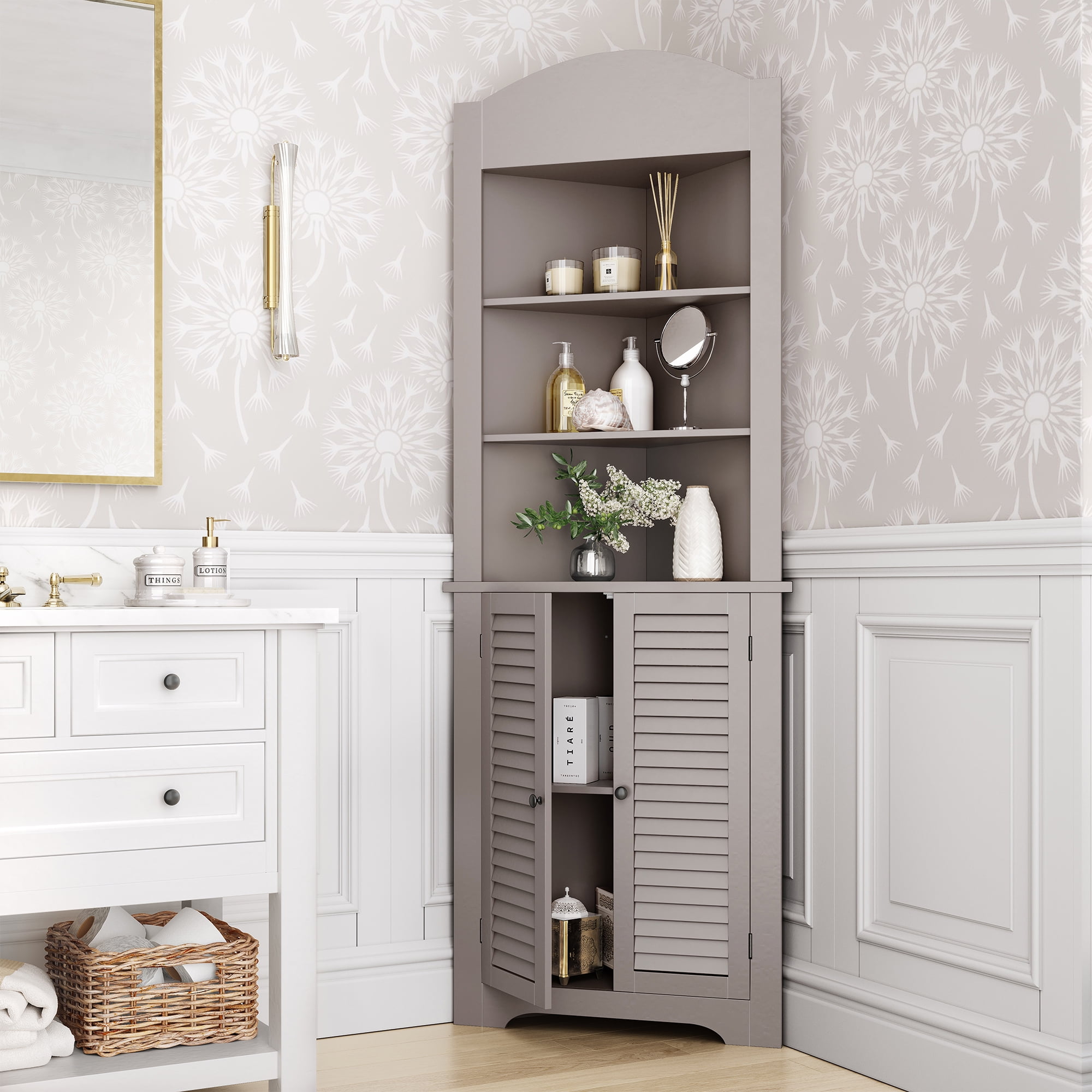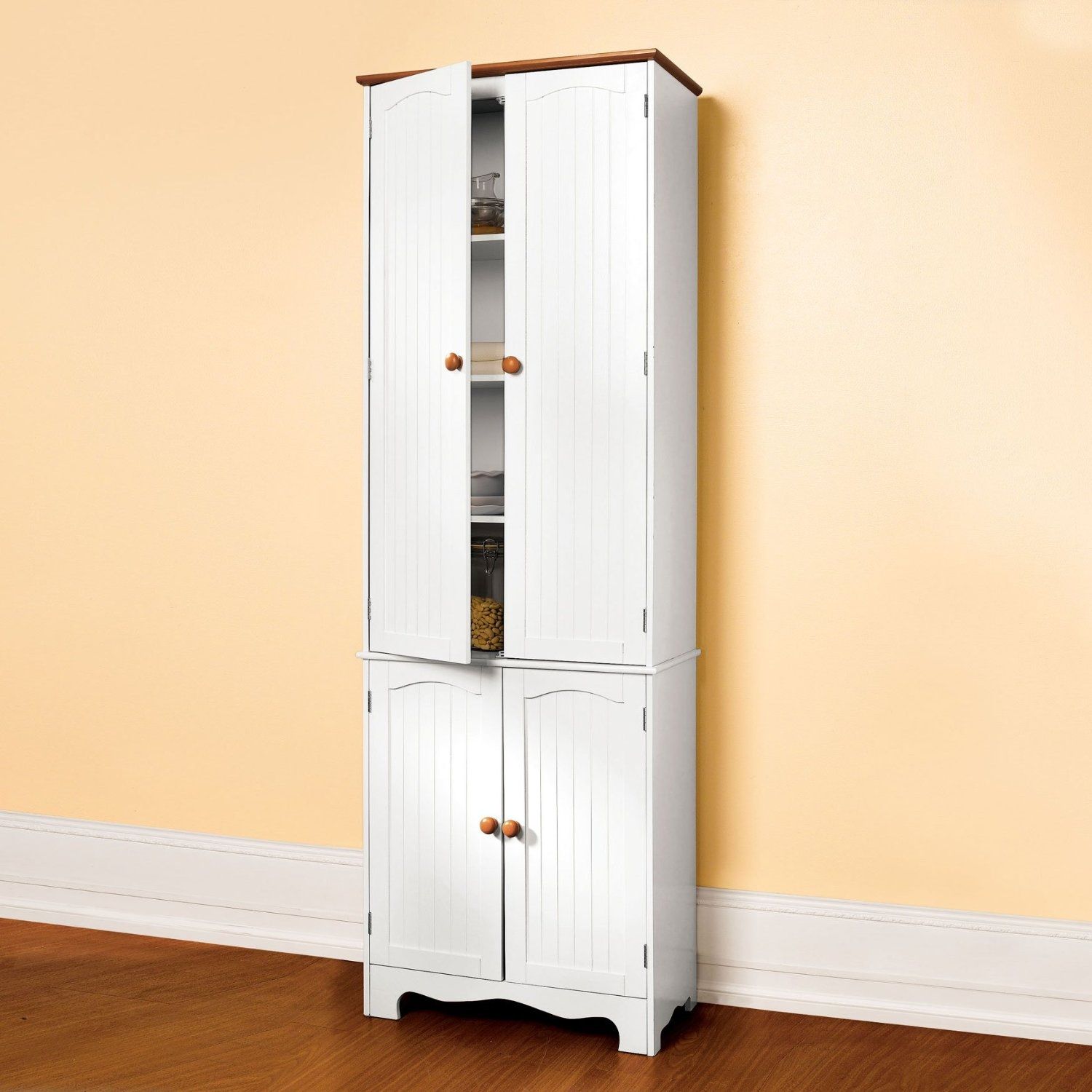Design Considerations for Tall Kitchen Cabinets with Doors: Tall Kitchen Cabinet With Doors

Choosing the right tall kitchen cabinets can seriously elevate your Jakarta South kitchen game. Think sleek, functional, and totally Instagrammable. Getting the design right means considering style, functionality, and the all-important workflow. Let’s dive into the details to create a space that’s both stylish and practical.
Tall Kitchen Cabinet Design Styles, Materials, and Hardware
The style of your tall cabinets sets the tone for your entire kitchen. From classic elegance to modern minimalism, the choices are endless. The right materials and hardware will complete the look and ensure durability.
| Design Style | Door Material | Finish Options | Hardware Options |
|---|---|---|---|
| Shaker | Solid wood (Oak, Maple, Cherry), MDF | Painted (matte, semi-gloss, high-gloss), stained | Knobs, pulls (metal, ceramic, wood), cup pulls |
| Modern | MDF, lacquered wood, glass | High-gloss lacquer, matte lacquer, wood veneer | Sleek bar handles, minimalist knobs, recessed handles |
| Traditional | Solid wood (Mahogany, Walnut), wood veneer | Stained, painted (antique white, cream), distressed finishes | Ornate knobs, decorative pulls, antique-style hardware |
| Contemporary | Thermofoil, laminate, acrylic | Variety of colors and textures, metallic finishes | Integrated handles, flush pulls, minimalist designs |
Impact of Cabinet Height on Kitchen Functionality and Workflow
Cabinet height directly impacts storage capacity and ease of access. Think about your reach and the types of items you’ll be storing. Taller cabinets are perfect for storing less frequently used items like extra cookware or seasonal serving dishes, while lower cabinets are ideal for everyday essentials.
For example, a 90cm tall cabinet is great for storing plates and bowls, while a 210cm tall cabinet might house rarely used appliances or holiday decorations. Consider using pull-out shelves or drawers in taller cabinets to maximize accessibility.
Comparison of Door Opening Mechanisms
The way your cabinet doors open significantly affects the usability of your kitchen. Each mechanism offers unique advantages and disadvantages.
- Hinged Doors: Traditional and cost-effective, but can intrude on floor space when open. Suitable for most cabinets.
- Sliding Doors: Space-saving, ideal for narrow spaces or areas with limited clearance. Can be more expensive than hinged doors.
- Bi-fold Doors: Good compromise between hinged and sliding doors. Offers more access than hinged doors but less than sliding doors. Can be more complex to install.
Sample Kitchen Layout Incorporating Tall Cabinets
Imagine a 3m x 4m kitchen with a galley-style layout. Along one wall (4m), install a run of 2.4m tall cabinets, including two 2.1m tall pantry cabinets on either side. These would be great for storing bulk items and rarely used appliances. In the center, incorporate a 90cm tall cabinet for everyday dishes and glasses. The other 3m wall can feature lower cabinets and countertops for food preparation and cooking. This design maximizes vertical space while maintaining easy access to frequently used items. The pantry cabinets are placed at the end to avoid obstructing the main workflow.
Storage Solutions and Organization within Tall Kitchen Cabinets with Doors
Okay, so you’ve got these amazing tall kitchen cabinets – the kind that make your South Jakarta friends *green* with envy. But let’s be real, height doesn’t automatically equal organization. To truly unlock the potential of these vertical storage powerhouses, you need a smart strategy. Think of it as maximizing your luxury apartment’s vertical real estate – it’s all about efficient use of space.
Innovative Storage Solutions for Maximizing Space
Utilizing innovative storage solutions is key to transforming those tall cabinets from storage black holes into organized havens. The right tools can make all the difference, transforming frustration into a smooth, efficient workflow. Here are some game-changers:
| Solution | Description | Pros | Cons |
|---|---|---|---|
| Pull-out Shelves | Shelves that slide out on tracks, making accessing items at the back easy. | Easy access to all items, maximizes space utilization, prevents items from getting lost in the back. | Can be more expensive than fixed shelves, requires careful measurement and installation. |
| Drawer Dividers | Dividers that create compartments within drawers to organize utensils, cutlery, or other small items. | Keeps items organized and prevents them from shifting around, improves visibility. | Requires purchasing separate dividers, might not fit all drawer sizes. |
| Vertical Organizers | Slim, vertical organizers that utilize vertical space for storing spices, canned goods, or other items. | Optimizes vertical space, improves visibility and accessibility, keeps items organized. | Can be bulky if not chosen carefully, might not fit all cabinet sizes. |
| Lazy Susans | Rotating trays that allow easy access to items stored in the corners of cabinets. | Great for maximizing corner space, improves visibility and accessibility of items in hard-to-reach areas. | Can be bulky, requires careful measurement to ensure a proper fit. |
Organizing Cookware, Dishes, and Food Storage Containers
Effective organization is not just about having the right tools; it’s also about employing smart strategies. A well-organized kitchen is a happy kitchen – it’s all about flow and efficiency. Here’s how to tackle some common culprits:
Tall kitchen cabinet with doors – For cookware, consider stacking pots and pans based on size, using pot lid organizers to keep lids from getting lost or scratched. Group similar items together, like all frying pans in one area, and saucepans in another. Heavier items should be placed lower for stability.
Dishes can be organized by type (dinner plates, salad plates, bowls) and frequency of use. Frequently used items should be easily accessible. Consider using dish racks to keep dishes organized and dry after washing.
Food storage containers should be organized by size and type of food stored. Clear containers are best for easy identification of contents. Keep frequently used containers at the front and less frequently used ones at the back.
Comparison of Interior Cabinet Organization Systems
Different organization systems cater to different needs and preferences. Consider your lifestyle and the contents of your cabinets when making a choice.
Pull-out shelves vs. Fixed Shelves: Pull-out shelves offer better accessibility, but fixed shelves are generally cheaper and easier to install. The best choice depends on budget and the contents of the cabinet. Heavier items might require stronger fixed shelving.
Drawer dividers vs. Open shelving: Drawer dividers provide better organization for small items, but open shelving allows for a quicker visual overview of contents. The choice depends on the items stored and personal preference. Open shelving is better for quick access but can look cluttered if not organized well.
Vertical organizers vs. Stacking: Vertical organizers are ideal for maximizing vertical space, but stacking requires careful planning to ensure stability. The choice depends on the shape and size of the items being stored and the available vertical space.
Step-by-Step Guide to Organizing a Tall Kitchen Cabinet
Ready to transform your tall cabinet into a marvel of organization? Follow these simple steps:
- Measure your cabinet: Accurate measurements are crucial for selecting the right storage solutions. Note the height, width, and depth of your cabinet.
- Empty the cabinet: Take everything out, clean it thoroughly, and assess what you have.
- Purge unwanted items: Be ruthless! Discard or donate items you don’t use or need.
- Choose your storage solutions: Select pull-out shelves, drawer dividers, or vertical organizers based on your needs and measurements.
- Install storage solutions: Carefully install the chosen solutions, following the manufacturer’s instructions.
- Label everything: Clear labeling makes it easy to find items quickly. Use labels that are easy to read and understand.
- Arrange items: Place frequently used items within easy reach and less frequently used items higher up.
Installation and Maintenance of Tall Kitchen Cabinets with Doors

Installing tall kitchen cabinets might seem daunting, but with a methodical approach and the right tools, it’s a manageable DIY project, even for those with limited experience. Proper installation ensures both functionality and aesthetics, enhancing your kitchen’s overall look and feel. Regular maintenance, meanwhile, is key to extending the life of your cabinets and maintaining their pristine appearance. Let’s delve into the specifics.
Cabinet Installation Process
Careful planning and precise measurements are crucial for a successful installation. The following steps Artikel a typical installation process, but always refer to the manufacturer’s instructions for your specific cabinet model.
- Accurate Measurements: Before purchasing, meticulously measure the wall space where the cabinets will be installed. Note any existing obstructions like pipes or electrical outlets. Account for necessary clearances, especially for appliances and countertops.
- Cabinet Assembly: Many tall cabinets arrive pre-assembled, simplifying the process. However, some might require assembly according to the provided instructions. Pay close attention to the sequence of steps and use the appropriate tools.
- Wall Preparation: Ensure the wall is clean, dry, and level. Use shims to level uneven surfaces before mounting the cabinets. This ensures a straight and stable installation.
- Mounting the Cabinets: Use appropriate fasteners, such as screws, to securely attach the cabinets to the wall studs. Never rely solely on drywall anchors for heavy cabinets. Use a level to verify vertical alignment during the installation process.
- Securing the Cabinets: Once mounted, check the stability of each cabinet. Tighten all screws and ensure the cabinets are firmly secured to the wall. Use additional bracing if necessary, particularly for taller units.
- Door and Hardware Installation: Install doors and any necessary hardware according to the manufacturer’s instructions. Ensure proper alignment and functionality of all doors and drawers.
- Final Adjustments: After installation, check for any gaps or misalignments. Make necessary adjustments to ensure everything is perfectly aligned and functional.
Common Installation Problems and Solutions
Several issues can arise during installation. Forewarned is forearmed, as they say. Here are some common problems and their solutions:
- Uneven Walls: Use shims to level the cabinets before securing them to the wall. This ensures a straight and stable installation.
- Incorrect Measurements: Double-check all measurements before purchasing and installing cabinets. Incorrect measurements can lead to significant problems.
- Difficulty Aligning Cabinets: Use a level frequently throughout the installation process to ensure proper alignment. Adjustments are easier to make during the installation rather than after.
- Insufficient Wall Support: Ensure that cabinets are secured to wall studs for optimal support. Using additional bracing might be necessary, especially for taller units.
Cabinet Maintenance and Preventative Measures
Regular maintenance is essential to keep your cabinets looking their best and extending their lifespan. A little preventative care goes a long way.
- Regular Cleaning: Wipe down cabinets regularly with a damp cloth and mild detergent. Avoid harsh chemicals or abrasive cleaners that can damage the finish.
- Inspect Hinges and Hardware: Periodically check hinges and hardware for looseness or damage. Tighten loose screws or replace damaged parts as needed.
- Address Issues Promptly: Deal with any problems like sticking doors or squeaky hinges immediately to prevent further damage.
- Protect from Moisture: Ensure proper ventilation in the kitchen to prevent excessive moisture buildup, which can damage wood cabinets.
Troubleshooting Guide for Common Cabinet Issues, Tall kitchen cabinet with doors
A quick reference guide to address common problems efficiently.
| Problem | Cause | Solution | Prevention |
|---|---|---|---|
| Squeaky Hinges | Loose screws, dry hinges | Tighten screws or lubricate hinges with a light oil | Regularly check and tighten screws |
| Sticking Doors | Warping, paint buildup, debris | Plane down warped areas, remove paint buildup, clean debris | Avoid exposing cabinets to excessive moisture |
| Damaged Cabinet Components | Impact damage, improper installation | Repair or replace damaged parts | Handle cabinets with care, ensure proper installation |
| Loose Doors/Drawers | Loose screws, worn-out hinges/slides | Tighten screws, replace worn-out hinges/slides | Regularly inspect and tighten screws |
